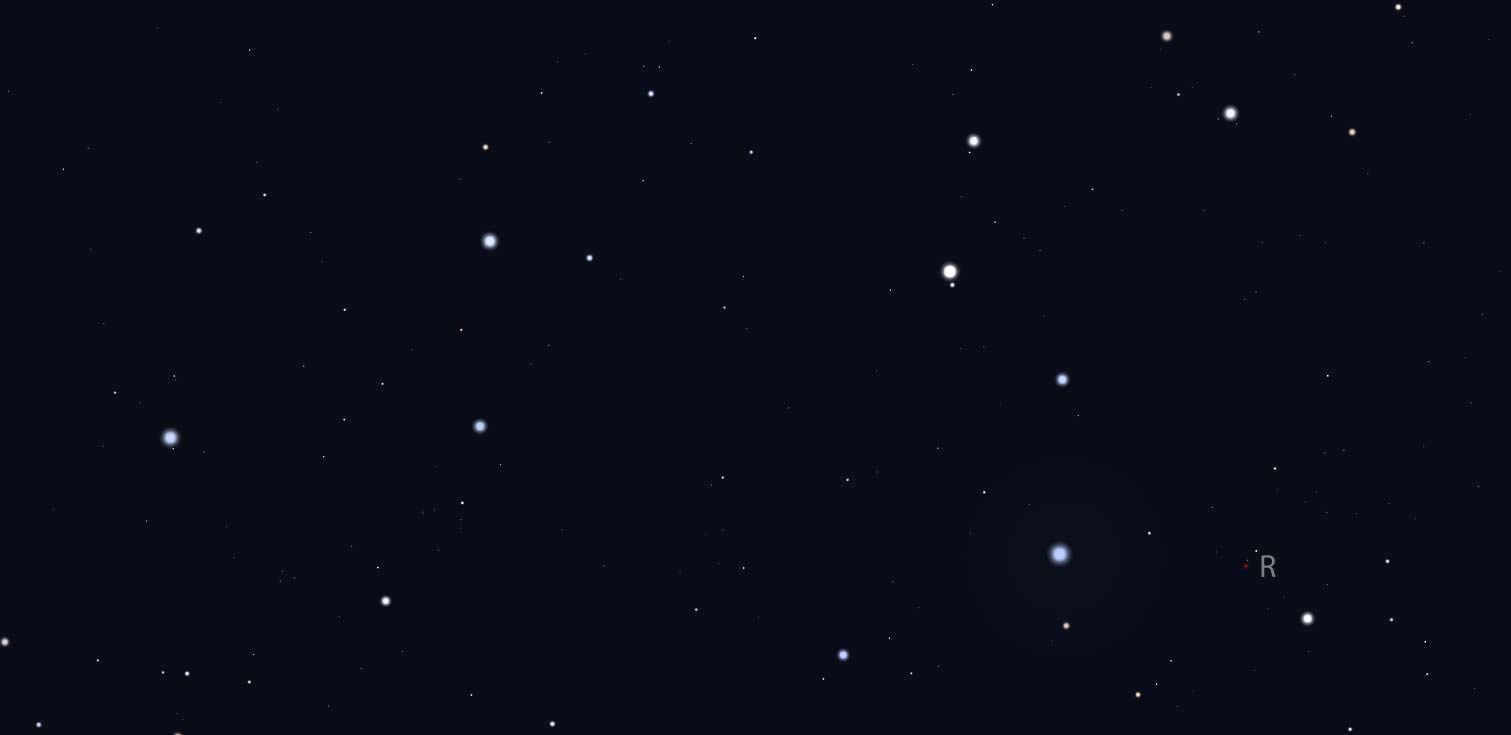
Variable Star R Leonis
March 2012 :
On the evening of March 1, 1918, a young Ohio farm boy trained a small refracting telescope towards the variable star R Leonis. He estimated its brightness, later forwarding the information to the American Association of Variable Star Observers. It was the first of over 132.000 variable star observations the legendary Leslie Peltier would submit to the AAVSO.
Since Peltier’s time, R Leo has introduced dozens of amateur astronomers to the rewarding pastime of variable star observing. R Leo is tailor-made for the novice for two reasons – it’s easy to find and easy to observe. You’ll find R Leo by directing your telescope slightly north of a spot one-third of the way from omicron () Leonis to Regulus (the circled area on the accompanying map of Leo). An expanded view of that circle shows R Leonis and the magnitudes of nearby comparison stars, decimals omitted. R Leonis is bright enough (its average magnitude range is 5.8 to 10.0) to be seen in binoculars when near maximum and with a small-aperture telescope throughout its 312-day cycle.
The magnitude range and period attributed to R Leonis are typical of a class of variable stars known as Mira-type, or Long-Period Variables (LPVs). Like its kindred LPVs, R Leonis is a cool red giant – a dying star whose brightness changes result from internal pulsations.
Based on recent observations, R Leonis has a magnitude in the mid-8 area and is rising to a predicted maximum later this month. The time is ripe for you to jump in and become acquainted with the variable star that launched Leslie Peltier’s stellar career.



